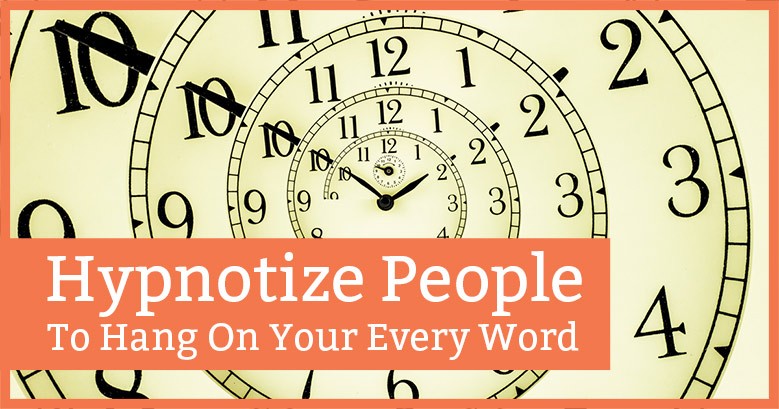
Almost there! Please complete this form and click the button below to gain instant access.


Finally, An Easy Way To Recruit - Rejection Free - Without Wasting Your Time & Money Chasing Dead Prospects & Leads...
We Respect Your Privacy

There’s an often-neglected consideration that makes ALL the difference to your marketing success.
And that is…
READERSHIP.
In other words, unless your prospect actually reads your message (or listens to and/or watches it), there’s absolutely NO chance of you making a sale.
Now before we move on, I need to get something off my chest.
Just so that we’re on the same page.
The thing is, people are generally skeptical of sales, marketing, and salespeople.
But you knew that didn’t you?
Although it’s really the wrong way to look at things, because sales is the glue that holds this world together.

We wouldn’t exist if that weren’t the case.
And we sure as heck wouldn’t enjoy all the luxuries and conveniences that we’re so used to and take for granted. Someone, somewhere had to sell something for it end up in our lives.
Economies are driven by sales of goods and services.
Companies’ profits and jobs are dependent on sales to keep the lights on.
So when someone views sales in a negative way, what it really boils down to is they’ve got some screwed up outlook on what makes the world go round.
And their negative view of others’ promotion efforts only keeps them broke.
I hope you feel good about influencing others to join your business or buy your products and services.
And you should never feel like you’re manipulating anyone, if what you’re doing is truly in their best interest.
Ok, now that we got this out of the way, let’s get cranking and into the meat of how to do this. And do it in a very subtle, yet powerful way.
Since we know most people are skeptical of any sales attempts and usually put up their defenses, most of the time the battle will be lost before you even start.
That is of course if you and your message comes across in a very “salesy” kind of way. And most sales messages do, unless you can tap into something that’s been hardwired into us from birth:
…to hear or see a story.
This is one of the biggest keys to sales success online, offline, or anywhere else in the Universe as long as you’re dealing with human beings.
You are selling to people, right?
Just checking.
Listening to stories was embedded deep into our psyche by our parents when they read to us at bedtime.
And then in kindergarten and school where we sat around and listened to the teacher read us books and tell us stories.
And then by cartoons, movies, theater and even music.
All these are different forms of stories.
And people love hearing them.
As a matter of fact…

Long or short, it doesn’t matter.
As soon our subconscious mind picks up on a story, we go into trance.
Remember the last time you went to see a good movie? One that moved you emotionally?
Why did it move you? Because you were in a hypnotic trance, and even though youconsciously knew it’s not real, on a subconscious level, you were deeply involved with the story.
Now how can we use that in selling and marketing?
Let me tell you about one of the most complicated products you can possibly sell:
Life Insurance.
As you can imagine, most people just don’t jump out of bed in the morning thinking “Today, is the day I’m going to buy Life Insurance.”
Some do, but most don’t. So when I was in the financial services business, and it was one of my primary products, I had to come up with a way for people to understand the importance of life insurance, without coming right out and saying “If you die, your family will be left with nothing.”
That’s WAY too aggressive and most people will have their defenses up in no time.
Somehow, intuitively I stumbled onto this, before I even knew about the whole story selling approach.
One of my friends in that business had a client who fought him tooth and nail about getting insured. He wanted to “think it over.” You’ve heard that one once or twice haven’t you?
Now he was in his early 40’s, with a wife who was a stay-at-home mom and two little kids.
Because he was the breadwinner, it was important for him to have something set aside for his family in case he died prematurely. That’s the responsible thing to do. And my friend convinced him to fill out the application and that he would be conditionally insured before the policy even gets issued.
Which meant if something happened to him between now and then, he was covered, as long as there was nothing in his history to prevent him from being insurable, like pre-existing conditions.
And after the policy was issued, should he decide to cancel, he could. Until then he could “think it over” while he’s covered.

He left a wife who didn’t work and didn’t speak much English because they had only lived in the country for a couple of years, and two little kids.
My friend brought a check for $150,000 to this family. Of course money can’t replace a person, and the emotional impact was devastating. But that money saved them financially.
I told this story on every single appointment I went on, and most of the time, unless the people I sat with were complete idiots, it was an easy sale from there.
Do you see how powerful this is?
Did you a see a picture in your mind of that family?
Did you feel some of the pain?
If you have kids, I bet the thought of how important having life insurance is crossed your mind.
For a brief moment while you were reading this, weren’t you 100% involved in the story?
You were just in a hypnotic trance.
When you tell a story that creates an emotional impact you’ll drive your point a lot better, putting your prospects in a highly suggestive state where they are open to your suggestions.
You can tell stories in your emails, blog posts, videos, webinars and sales letters.
And you should.
Because there’s absolutely no better way to sell than this.
Now here’s how to do it.
Think about the typical “Before and After” scenario.
A good example would be some big Hollywood blockbusters like:
Rocky – a struggling, broke, amateur boxer overcomes all these challenges and becomes a World Champion.
Karate Kid – a weak, bullied kid with a burning desire to get stronger, wins karate tournament, beats his #1 adversary, and gets the girl.
Jerry Maguire – a successful sports agent gets fired, humiliated, loses all his clients, and climbs his way up to become an even bigger success.
Rudy – a kid too little to play college football, ridiculed by his family, has a dream of playing at least one game at Notre Dame. Beats the odds and proves everyone wrong.
We all love the stories of the underdog. How they overcome challenges, and through change and transformation beat the odds and win. It’s entertaining and it grips us emotionally. It’s something we can identify and often relate to.

… you just have to dig deep enough to find them.
Here are a couple examples.
You’re going to discover how a once broke and near bankrupt single mom went from collecting food stamps to making over $487,539 in the last 12 months.
This is pretty short, yet it has a story element in it. Before and After. Broke to making lots of money.
And if you have details you can include them, making the story even more interesting. And then introduce the product (or the idea behind the product) that saved the day.
Here’s another example:
When the scales were tipping north of 400 lbs. he said “enough is enough,” and in a very short time went from a walking heart attack with one foot in the grave to 210 lbs of lean muscle, becoming a leading authority in the area of nutrition, fitness, and weight loss.
Short, simple and to the point.
And most important of all, it makes you really curious – how did he do that? Doesn’t it?
By the way, this last one is a true story. But that’s for another time.
Here’s one more:
Revealed in this program are a few simple secrets of how a local restaurant owner on the brink of a financial disaster, with one foot in the bankruptcy court, went from losing a business that’s been in his family for three generations to massive success, becoming the town’s hot spot with more business than he can handle.
His restaurant went from ghost town on Friday nights to the busiest spot in the area with lines outside the door.
And then you simply introduce the product.
Now doesn’t it sound a heck of a lot more interesting than saying something boring like – I’m going to show you how to grow your business… or how to lose weight…. or how to make more money?
Sure it does.
You want to grab them emotionally, and keep their eyes glued to the screen, hanging on to your every word.
Stories help you do that in the most powerful way.

Just look in your Inbox.
I bet it’s full of junk.
Lots of emails that just scream – SALES PITCH!
Now there’s a time for that, like when you’re running a special promo that ends in a few hours.
But for the most part, if you want people to read your emails, turn them into stories.
Here are some of my favorite subject lines from our emails that got great response.
It is very hard to resist opening these emails because they imply there’s a story inside.
And curiosity, the most powerful emotion you can tap into, takes over. It stops people dead in their tracks and almost forces them to see what it’s all about.
So…
Put simply…
Until next time,



Finally, An Easy Way To Recruit - Rejection Free - Without Wasting Your Time & Money Chasing Dead Prospects & Leads...
We Respect Your Privacy
